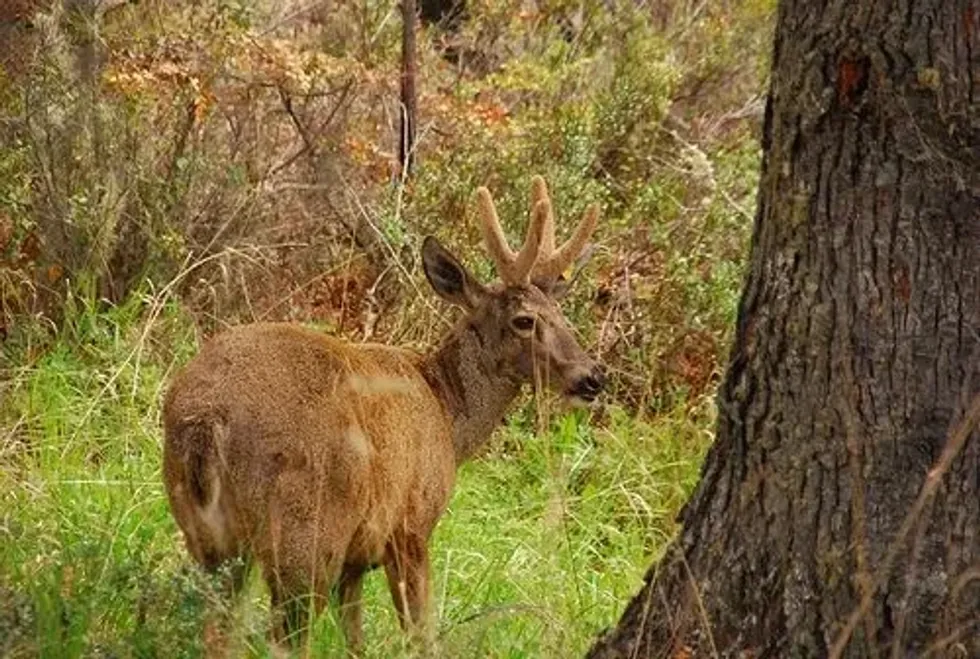There are almost 60 species of deer in the world. Huemul deer are also known as South Andean Huemul or the South Andean deer. They are native to Chile, Argentina as well as the valley of the Andes. They are not migratory however they move from higher elevations to lower elevations during winter and to higher elevations during summer.
Their population size has declined majorly almost making them an endangered species primarily due to habitat degradation, hunting, poaching, and other illegal practices. The South American is a member of the deer family and is the national animal of the country Chile.
Andean deer, the huemul is part of the Chilean coat of arms and holds relevance ecologically and culturally as well.
This article will take a look at some fun and interesting facts about the South Andean deer. If you like this article, then visit our facts articles about takins and kudus too.
Huemul Interesting Facts
What type of animal is a Huemul?
The South Andean huemul is a type of deer that belongs to the Animalia kingdom and is the national animal of Chile.
What class of animal does a Huemul belong to?
Huemul or Hippocamelus bisulcus belongs to the Mammalia class of species, the Cervidae family, and the Hippocamelus genus.
How many Huemuls are there in the world?
According to the IUCN red list, the total population size of South Andean huemul has experienced a decline and is around 1500 individuals with no more than 500 in Argentina and 1000 in Chile.
Where does a Huemul live?
The South Andean huemul is seen living in grasslands as well as savannas, upland forests, and valleys. They are deers native to mountainous regions including sub-antarctic Patagonia. They are seen living in groups and are not territorial.
What is a Huemul's habitat?
Habitats and distribution of Patagonian huemuls include primarily mountainous regions. They can be found at altitudes that range between 900-1700 m elevation above sea level. These deer adapt well to broken, difficult terrain they live in having a stocky build and short legs.
Who do Huemuls live with?
South huemul deer live in groups of two to five. They are diurnal and congregate. They are not territorial and move as per the climatic conditions.
How long does a Huemul live?
The huemul has an average lifespan of 14 years. The oldest deer recorded was Bambi, a Scottish red deer owned by the Fraser family in Beauly, Highland, UK. Bambi died on 20 January 1995 and was 31 years old.
How do they reproduce?
Huemul males and females become sexually mature at the age of six years. Deers reproduce sexually and the offspring develops through internal fertilization.
The breeding season begins in February and ends in May and a calf is born between November and December. The gestation period lasts seven months. Females give birth in isolated areas to keep their offspring safe from possible predators and nurse their young for a period of four to five months at six months of age.
What is their conservation status?
The South Andean deer is an Endangered species as per the International Union For Conservation Of Nature (IUCN). Their population size has been majorly impacted due to illegal practices like hunting and poaching as well as loss of habitat.
Huemul Fun Facts
What do Huemuls look like?
Their coarse coat is generally dark brown, although the color is richer in the summer. They have a stocky build and short legs.
Huemuls have a dark stripe on the bridge of their nose which forks in between the eye and forms a pair of dark eyebrows. Their large ears are sometimes described as donkey-like.
They are often confused with the Taruca also known as the North Andean deer however the Taruca tend to be smaller and lighter in color as compared to the Huemuls. Outside the eyes and in the nose it has a grayish color.
Only the males of the species grow antlers which usually have a single branch and they also have a distinctive face mask that looks like an elongated heart shape surrounding their forehead. The antlers grow up to 11 in (27 cm).
How cute are they?
They are extremely cute and unique beings, they are tolerant towards human beings and escape if they sense any predators.
How do they communicate?
They communicate with other species of their kind using different types of vocalizations including snorts, bleats, grunts, and fawns. When placed in a position of threat they primarily snort and stamp their front legs to make the other species of their kind aware.
How big is a Huemul?
A Huemul is 31.5-35.4 in (80-90 cm) tall which is five times bigger than the smallest species of deer the Southern Pudu which is 7.9 in (20 cm) in height.
How fast can a Huemul run?
A Huemul can run at a fast speed if they sense the presence of any predators. They also make use of the signature single hop to change direction. All four of their legs touch the ground at the same time while running.
How much does a Huemul weigh?
A Huemul weighs 154-198 lb (70-90 kg). The Alaskan moose is said to be the largest deer weighing 1800 lb (816 kg) and was recorded in Canada in September 1897.
What are the male and female names of the species?
A male huemul is called a buck or a stag and females are called a doe. Only the males of the species grow antlers which usually have a single branch and they also have a distinctive face mask that looks like an elongated heart shape surrounding their forehead.
What would you call a baby Huemul?
A baby huemul is called a fawn or a calf. There is no sexual size difference amongst fawns that are born unspotted. They are dependent on the parents in the initial few months but they become independent and sexually mature by the age of six years.
What do they eat?
They are primarily herbivores and specific folivores. The Huemul diet consists of primarily tender shoots, leaves, and certain types of grass. They feed on the grass in rare instances and not otherwise.
Are they dangerous?
In undistributed areas, they are very tolerant of people, but they may be shy in other areas. They don't attack unless they are harmed.
Their main instinct to any danger is to escape into areas where they can hide. Their predators include domestic dogs, small cats, foxes, lions, and tigers as well as certain species of birds who hunt for the fawn.
Would they make a good pet?
No, they are innately wild animals and best survive in their natural habitat which is in the wild. They cannot be adopted as pets as this would require special permission and legalities. The deer have been recorded in recent years in Nahuel Huapi National Park in Argentina and if you wish to see them you too could visit.
Did you know...
One in 30,000 deer is an Albino deer. Albino deer are primarily white, this happens in rare instances and if you spotted an Albino deer you probably came across one of those rare moments. John Bates, a Wisconsin naturalist wrote a book titled 'White Deer: Ghosts of the Forest'.
Each year the antlers of male deer fall off and regrow. They break due to multiple reasons like a fight, injury, or other illegal reasons as well like poaching.
Is the Huemul endangered?
They are majorly affected due to human impacts and challenges such as deforestation, habitat degradation, habitat fragmentation by roads, land conversion, and the introduction of non-native mammals.
They have also been impacted by illegal practices like hunting, and poaching. The past few centuries have seen populations of the South American huemul declining rapidly.
There have been initiatives that have been put into place to protect these unique and beautiful species like the Argentinean-Chilean Action Plan for the Conservation of the Southern Huemul and the specific additional protocol in the conservation of shared fauna and flora between Argentina and Chile under the umbrella of the Environment treaty between Chile and Argentina.
How did the Huemul get its name?
The huemul deer is a species native to the Patagonian wilderness. Huemul deer species is part of Chile's National Court Of Arms and are a national natural monument.
The exact origin of the name of the species is not known however, huemul is defined as a yellowish-brown deer native to the South American region.
Whatever the origins of these species, they play an important role in the understanding of the history of Chile as well as are important species for wildlife.
It is said that such species face so many types of threats to their existence that can almost lead them to the point of extinction. It is essential to support the cause of the protection of not just huemuls but all animals.
Here at Kidadl, we have carefully created lots of interesting family-friendly animal facts for everyone to discover! Learn more about some other mammals from our Gerenuk surprising facts, and Mule fun facts for kids pages.
You can even occupy yourself at home by coloring in one of our free printable deer coloring pages.










